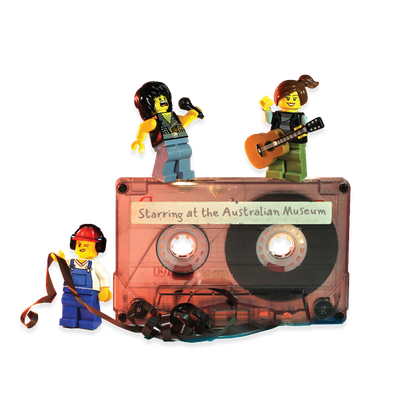Your search returned 109 results
By Page Type
By Tag
- All
- fish (966)
- blog (696)
- fishes of sydney harbour (401)
- First Nations (299)
- Blog (236)
- AMRI (169)
- archives (164)
- Eureka Prizes (146)
- Aboriginal and Torres Strait Islander (135)
- insect (126)
- Ichthyology (124)
- geoscience (109)
- minerals (102)
- climate change (99)
- podcast (94)
- Fish (91)
- Anthropology (89)
- International collections (80)
- Minerals Gallery (78)
- wildlife of sydney (78)
- Labridae (77)
- frog (74)
- gemstone (70)
- photography (66)
- history (64)
- Mollusca (60)
- gem (59)
- staff (59)
- Birds (56)
- Gems (56)
- Indonesia (56)
- education (56)
- shark (55)
- AMplify (54)
- people (53)
- earth sciences (50)
- exhibition (50)
- past exhibitions (50)
- Gobiidae (48)
- sustainability (46)
- Pomacentridae (45)
- Serranidae (44)
- lifelong learning (42)
- science (42)
- Earth and Environmental Science (41)
- Syngnathidae (41)
- Ancient Egypt (40)
- Bali (40)
- bird (40)
- dangerous australians (40)
-
Garnet
https://australian.museum/learn/minerals/gemstones/garnet/Facts about Garnet
-
Topaz
https://australian.museum/learn/minerals/gemstones/topaz/Facts about Topaz.
-
Sapphire and Ruby
https://australian.museum/learn/minerals/gemstones/sapphire-and-ruby/Facts about Sapphire and Ruby.
-
Igneous rock types
https://australian.museum/learn/minerals/shaping-earth/igneous-rock-types/Igneous rocks can be divided up into four groups, based on how they were formed and what they are made of.
-
Volcanic landforms
https://australian.museum/learn/minerals/shaping-earth/volcanic-landforms/Each type of volcanic massif (structure) contains lavas, pyroclastic rocks and intrusions, but these differ in proportions and compositions.
-
Sedimentary processes
https://australian.museum/learn/minerals/shaping-earth/sedimentary-processes/Sediments are formed by the breakdown (both physical and chemical) of pre-existing rocks, which may be of igneous, metamorphic or sedimentary origin.
-
Pyromorphite
https://australian.museum/learn/minerals/mineral-factsheets/pyromorphite/Pyromorphite (lead chloro-phosphate) was a common mineral of the oxidised zone of the Broken Hill orebody, and exceptional specimens of various crystal forms and colours were found.
-
Anglesite on Cerussite
https://australian.museum/learn/minerals/mineral-factsheets/Anglesite-on-cerussite/This reticulated cerussite (lead carbonate) has a sugar-like coating of anglesite (lead sulphate).
-
Banded Iron Formation
https://australian.museum/learn/minerals/mineral-factsheets/banded-iron-formation/Weighing a whopping 437 kg, this spectacular specimen is part of the Archean Nimingarra Formation of Western Australia and illustrates a dramatic change in Earth’s past atmospheric conditions.
-
Oxidised zone copper minerals
https://australian.museum/learn/minerals/mineral-factsheets/oxidised-zone-copper-minerals/This stunning polished slice of blue chrysocolla (copper silicate with water), green malachite (copper hydroxy-carbonate) and brown ironoxide- stained jasper (silicon dioxide) is from the DeGrussa Copper-Gold Mine in the Pilbara Block of Western Australia.
-
Discover more
2025 Australian Geographic Nature Photographer of the Year
Special exhibition
Free entry
Now open -
Discover more
Unfinished Business
Special exhibition
Free entry
Now open -
Discover more
Wansolmoana
Permanent exhibition
Free entry
Open daily -
Find out more
Burra
Permanent kids learning space
Free entry
10am - 4.30pm![]()
-
Discover more
Minerals
Permanent exhibition
Free entry
Open daily![]()




